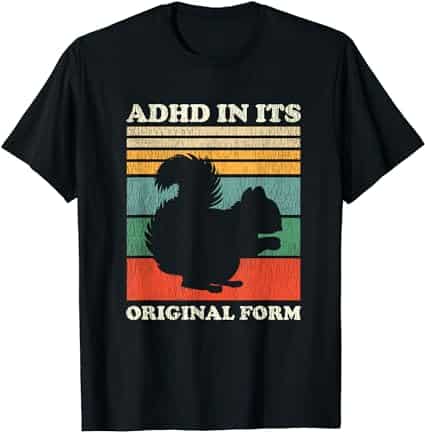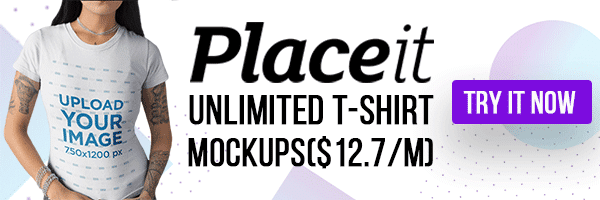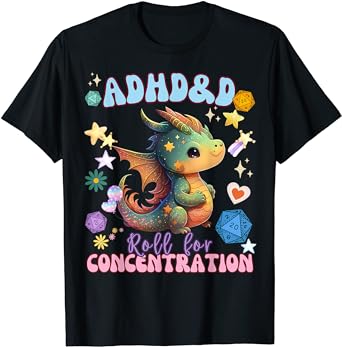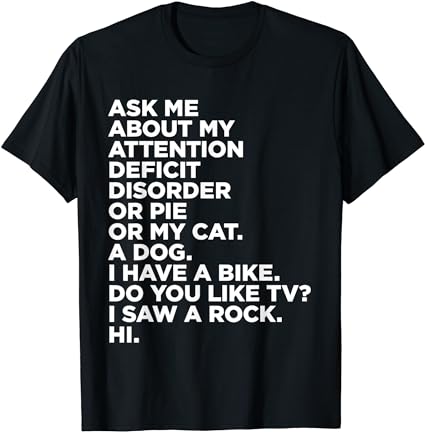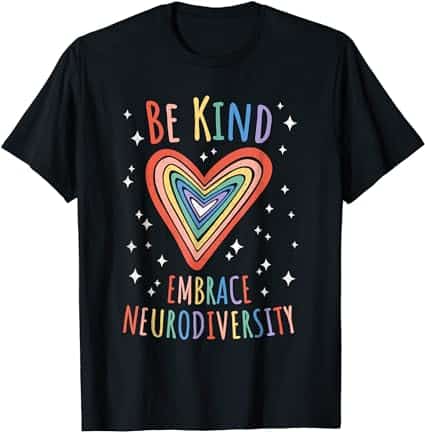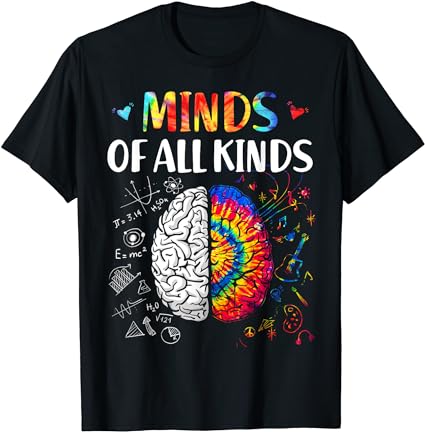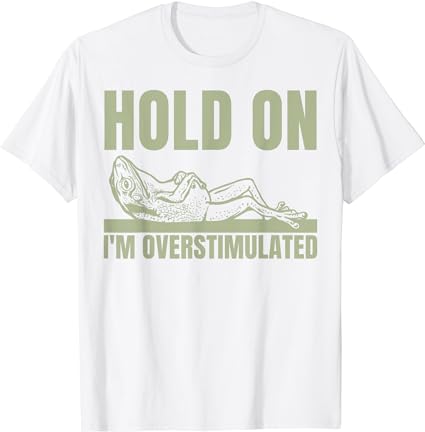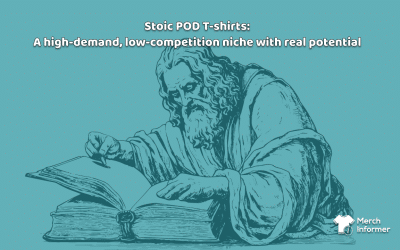Thriving in Merch by Amazon with ADD/ADHD
If you’re creative, organized, ambitious, but also struggle with keeping yourself disciplined, completing products, sticking to a schedule and procrastinating, you may be one of them many of us who have ADD or ADHD.
Sadly, those initials get thrown around a lot these days, with or without an official diagnosis. For those of us who either are or legitimately would be, this can be harmful. It dilutes the effectiveness of making space/boundaries for ourselves when working with others and also builds internal conflicts which further complicate our ability to do what we need to do.
Just know you’re not alone, and this is actually a superpower if channeled. But like any superpower, there’s always a Kryptonite – the challenge is that sometimes work is like digging in a Kryptonite mine. The digging must be done, even though everything around feels like it’s working against you.
Sometimes it helps just to be aware of the challenges and face them the way it works for you. I can share some of my awareness and coping skills as someone formally diagnosed (late in life and only recently – but it came as no surprise), especially as it pertains to a Merch by Amazon business. I hope there are some nuggets here that will help.
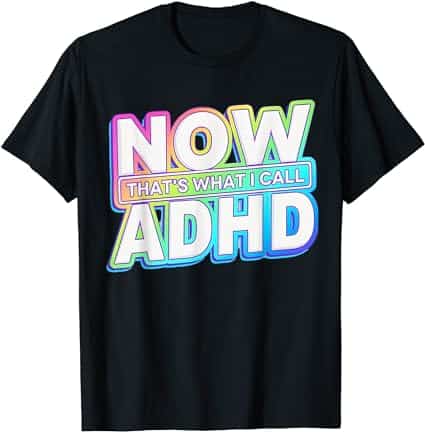
The Burst of Creativity
For many with ADD/ADHD, creativity isn’t just a skill—it’s a way of life. Ideas might come at you in waves, each one more exciting than the last. One moment, you might envision a simple yet catchy phrase on a black t-shirt; the next, you’re imagining a complete line of products featuring intricate designs that could take over any niche market on Amazon.
This surge of creativity is our greatest asset in the MBA world. The platform allows for an incredible array of products to be designed: t-shirts, hoodies, pop sockets, phone cases, and more.
The challenge, however, lies in channeling these diverse ideas into a cohesive and manageable plan. ADD/ADHD can often make it difficult to focus on one project before jumping to the next, which can lead to a fragmented approach and a lack of consistent branding. I still wrestle with this in all my endeavors, not just my Amazon work.
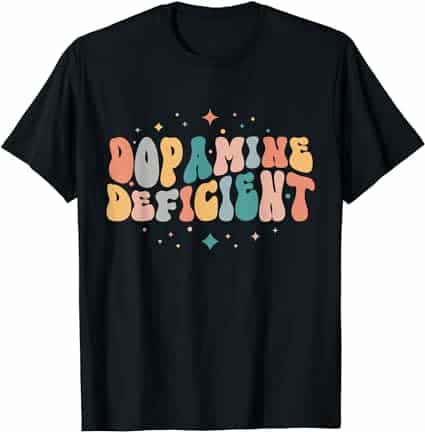
Developing a Sustainable Workflow
Creating a workflow that you can stick to is crucial, but admittedly easier said than done.
For those of us with ADD/ADHD, the need for variety can be addressed by structuring your workdays around different themes or product types. For example, you might designate:
- Mondays for Market Research: Delve into trends and customer feedback to guide your week’s designs.
- Tuesdays and Wednesdays for Designing: Focus on creating new graphics and text for different merchandise.
- Thursdays for Applying Designs to Products: Take your new designs and adapt them across multiple product types to maximize exposure.
- Fridays for Review and Adjustments: Analyze what’s working and make tweaks to existing designs.
This structured yet flexible approach can potentially help manage the typical hyperactivity and impulsiveness associated with ADD/ADHD by keeping the brain engaged and directed.

The Challenge of Routine
Here’s where that last approach tends to hit a wall for us – the monotony of routine might sometimes feel constricting.
It’s about striking a balance—having a predictable schedule that reduces decision fatigue and provides stability, while also allowing enough flexibility to cater to spontaneous bursts of energy and creativity.
For example, while it’s helpful to have designated days for specific tasks, keeping an hour or two each day for spontaneous work can cater to the need for variety. This could mean jumping on a sudden inspiration for a new design or revisiting a previous idea with fresh eyes.
I also find that having someone to be accountable to helps. Much like a sponsor in a recovery program, another person who you trust implicitly (for me, it’s my wife) can reinforce the responsibility you’ve set for yourself. This person doesn’t even need to be active – sometimes just knowing that someone is paying attention is all we need to reinforce a responsibility mindset.
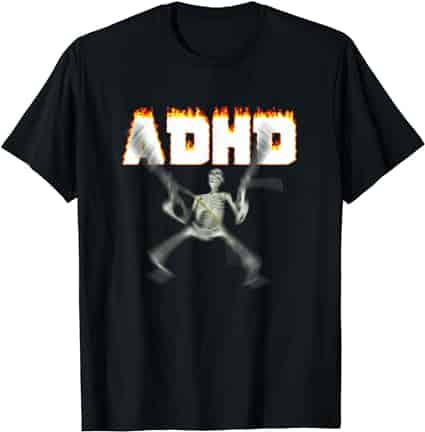
Managing Creativity and Productivity
Hyper-focus is a phenomenon many with ADD/ADHD experience—it can be another superpower when harnessed correctly, allowing deep, productive engagement with tasks.
For an MBA designer, this might mean getting lost in the creative process, producing detailed and unique artwork. However, the downside is the potential to overlook other crucial aspects of the business, such as setting up listings, marketing products, or customer service.
To balance this, it’s beneficial to set alarms or reminders to switch tasks, ensuring that both creative and operational duties get the necessary attention. Utilizing project management tools can also help keep an overview of all business activities, helping to avoid getting too absorbed in any one area.
I’ve been keeping a timesheet where I document every task in 15-minute increments. I don’t look back on it until the end of the week/month/quarter. Only then can I objectively see where my time is being spent and decide whether to make adjustments for a better ROI-OT (Return On Investment – Of Time).
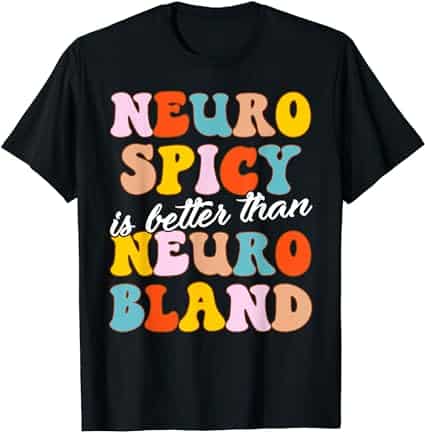
Work/Life Balance in an ADD/ADHD World
Balancing work and personal life is especially crucial when your workspace is at home. For individuals with ADD/ADHD, it can be challenging to ‘switch off’ from work mode, particularly when engaged in a stimulating creative process.
Establishing physical boundaries—like a dedicated workspace—and temporal boundaries—like set work hours—can significantly aid in managing this balance.
If Merch by Amazon is a side hustle, ensuring that it doesn’t encroach on your primary employment or personal time is crucial. If it’s your full-time gig, delineating clear periods for work and relaxation can help maintain long-term productivity and mental health.
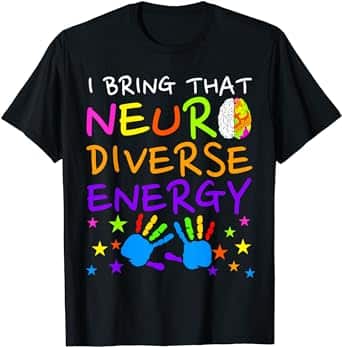
From Side Hustle to Full-Time Venture
Transitioning Merch by Amazon from a side project to a full-time business is a significant step that can amplify the pressures of performance. For someone with ADD/ADHD, this might heighten issues like time management or task prioritization. In such cases, it may be worth considering outsourcing tasks that are repetitive or less engaging, such as inventory management or even some aspects of customer service, allowing more time to focus on creating and innovating.
You Are The Only One Who Can Control…You
Running a Merch by Amazon enterprise with ADD/ADHD involves leveraging your natural creative flair while developing strategies to cope with the challenges posed by attention and focus shifts. It’s about understanding your cognitive patterns and creating an environment that supports your strengths while mitigating weaknesses. Through structured routines, strategic planning, and the right mix of flexibility, you can create not only a successful business on MBA but also a rewarding creative outlet.
Never forget that you’re not alone in this. There are many of us who face the double-edged sword of opportunity and challenge that ADD/ADHD presents. We’ve talked in previous blogs about all the other hurdles that face the average MBA designer – for many of us, the biggest hurdle may be ourselves. But there is peace in knowing that is the one thing in life that we have full control over.

